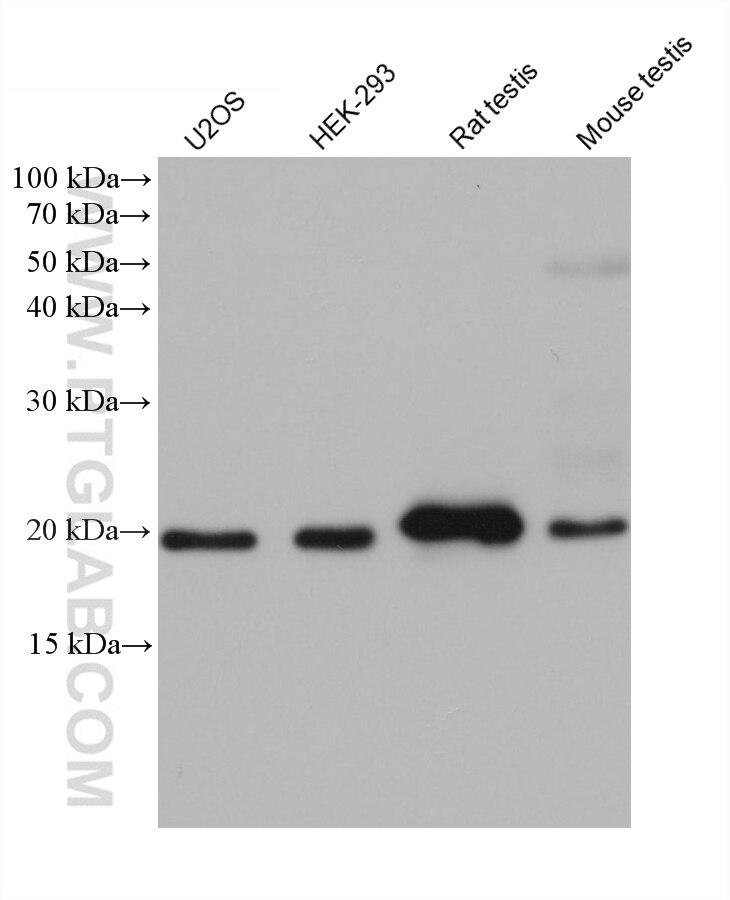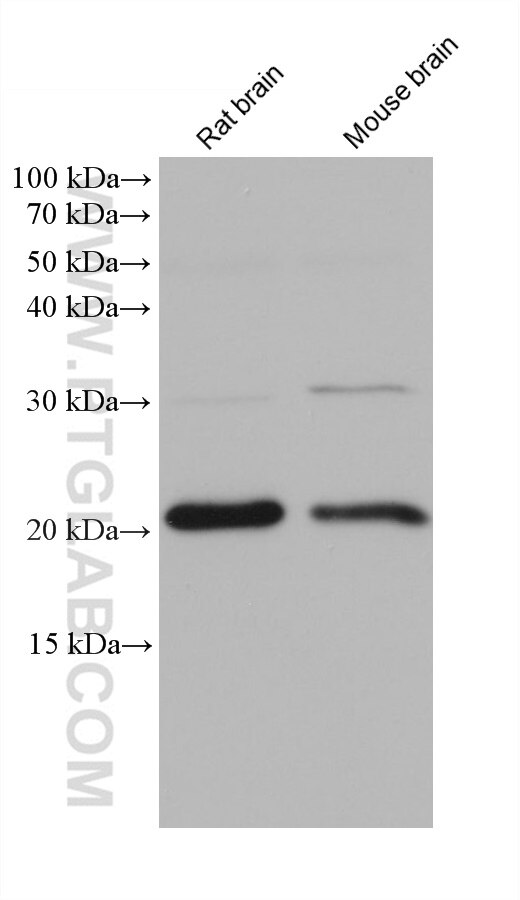Tested Applications
| Positive WB detected in | U2OS cells, rat brain tissue, HEK-293 cells, rat testis tissue, mouse testis tissue, mouse brain tissue |
Recommended dilution
| Application | Dilution |
|---|---|
| Western Blot (WB) | WB : 1:5000-1:50000 |
| It is recommended that this reagent should be titrated in each testing system to obtain optimal results. | |
| Sample-dependent, Check data in validation data gallery. | |
Product Information
68478-1-Ig targets NUDT10 in WB, ELISA applications and shows reactivity with Human, mouse, rat samples.
| Tested Reactivity | Human, mouse, rat |
| Host / Isotype | Mouse / IgG2b |
| Class | Monoclonal |
| Type | Antibody |
| Immunogen |
CatNo: Ag11878 Product name: Recombinant human NUDT10 protein Source: e coli.-derived, PET28a Tag: 6*His Domain: 1-164 aa of BC050700 Sequence: MKCKPNQTRTYDPEGFKKRAACLCFRSEREDEVLLVSSSRYPDRWIVPGGGMEPEEEPGGAAVREVYEEAGVKGKLGRLLGVFEQNQDPEHRTYVYVLTVTELLEDWEDSVSIGRKREWFKVEDAIKVLQCHKPVHAEYLEKLKLGGSPTNGNSMAPSSPDSDP Predict reactive species |
| Full Name | nudix (nucleoside diphosphate linked moiety X)-type motif 10 |
| Calculated Molecular Weight | 164 aa, 19 kDa |
| Observed Molecular Weight | 20 kDa |
| GenBank Accession Number | BC050700 |
| Gene Symbol | NUDT10 |
| Gene ID (NCBI) | 170685 |
| RRID | AB_3085189 |
| Conjugate | Unconjugated |
| Form | Liquid |
| Purification Method | Protein A purification |
| UNIPROT ID | Q8NFP7 |
| Storage Buffer | PBS with 0.02% sodium azide and 50% glycerol, pH 7.3. |
| Storage Conditions | Store at -20°C. Stable for one year after shipment. Aliquoting is unnecessary for -20oC storage. 20ul sizes contain 0.1% BSA. |
Background Information
NUDT10 (nucleoside diphosphate linked moiety X-type motif 10), also named as DIPP3A or APS2, belongs to the subgroup of phosphohydrolases that preferentially attack diphosphoinositol polyphosphates (PMID: 12105228, 12689335). Five human isoforms of DIPP have been found and named as DIPP type 1(NUDT3), type 2α/β(NUDT4), type 3α(NUDT10) and type 3β(NUDT11), which have the similar molecular weight and high homology (PMID: 12105228).
Protocols
| Product Specific Protocols | |
|---|---|
| WB protocol for NUDT10 antibody 68478-1-Ig | Download protocol |
| Standard Protocols | |
|---|---|
| Click here to view our Standard Protocols |






